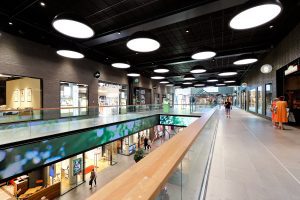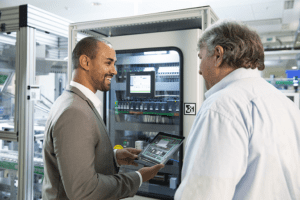Our country is witnessing a wave of development, accelerated by technology and efficient human resources. Leading industries and influencers are aiding policymakers in areas like information technology and infrastructure.
A standout smart city challenges generally faced in modern times is the need to facilitate a sound economic and technological ecosystem. This mission is in sync with the pursuit of creating and maintaining a sustainable industry structure, which makes it all the more important for organisations to streamline the human workforce with smart technological strategies.
One of the most prominent technological concepts spearheading this rapid development is the Internet of Things. Keeping this in mind, it must be said that the Industrial Internet of Things is being used across a variety of domains, ranging from electrical industries dealing in semiconductors to cloud computing or even artificial intelligence. These mechanics have not only made it possible to familiarise the concept of product-as-service but also increased the output of current machinery. Industry experts in this field assure that enabling automation in several processes will eliminate the risk of human errors in the system.
However, before looking at results, it is essential to understand how it can fundamentally bring the manufacturing or service industry in harmony. The Industrial Internet of Things aims at inculcating this machinery with state-of-the-art customer-centric software solutions to raise productivity levels. This is enabled via smart panels mounted in the machinery that proactively cuts off the inefficiencies resulting in making quick decisions about the load on the machine, its output and the expenses incurred in the industry. Another significant addition to the functionality of the smart panel is the negligible need of bandwidth – or its functionality with ethernet, for that matter.
With an increasing number of integrated resources, new horizons can be set in business as it gives the ease of electronic access and brings forward multi-site communication across cities. This is a calculated move in achieving and setting new industry standards and business or profit-related goals.
This rise in automation and has created a need to understand the overarching scenario and develop a human workforce capable of monitoring the operations of automated tools. These new forms of automation have been designed to improve machinery operations – however, it is still essential for organisations to have human resources keep a tab on operations and functioning of the inputs. Automation training should generally involve customised tutorials and lessons to ensure that employees understand this technology to maximise its overall utility. This sufficient level of understanding also helps reduce the risk of production or output hindrances due to a lack of knowledge.
It is widely acknowledged that IoT is transforming how companies across industries carry out their business and are opening avenues for them to introduce an age of automated and smart industry solutions across multiple business verticals. Industrial IoT has helped companies expand, while simultaneously helping them widen the economy by enabling reliable industry services. It exemplifies a cycle of generating employment, optimising inputs, and increasing revenue. Every step towards a sustainable industry structure brings us closer to the next wave of technology strategy for production or manufacturing businesses.
#SchneiderElectric #LifeIsOn



